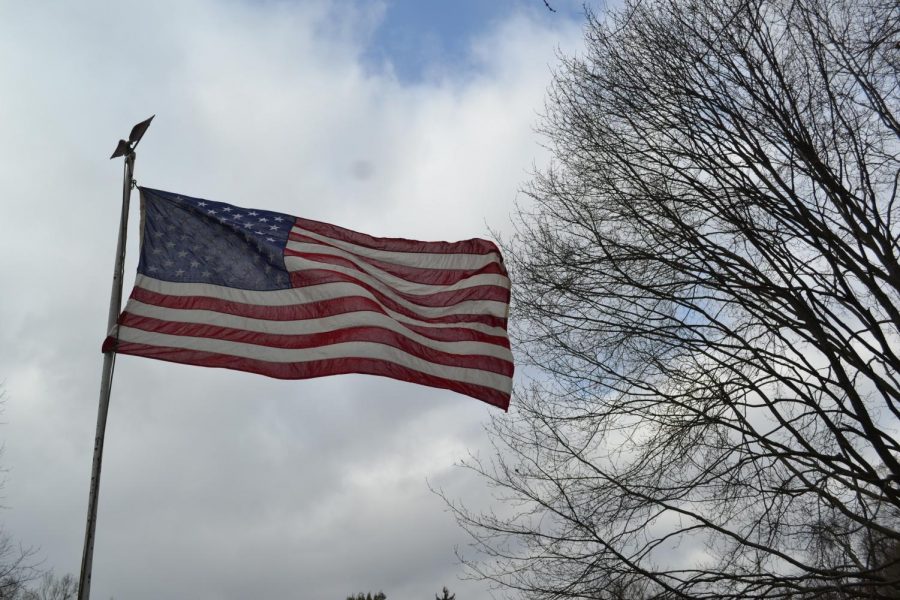America Dreamt
People have conflicting viewpoints on the American Dream
What has become of the American ethos? We once believed that freedom was what facilitated and aided in one’s success and prosperity. But has it changed, or has it stayed the same? Perhaps it has remained with the same meaning but is now being executed in a different manner. Has it completely dissolved, and become a distant historical set of ideals of the American people?
When our forefathers declared our nation a nation of “Free and Independent States,” this was perhaps not the time of the birth of the American Dream, but one might say it was the time of its publication in the US.
As to what the American Dream is today, many people have different views. Some believe that the American Dream is about creating new businesses.
“In America, there are a lot of opportunities for you to be able to do your thing,” sophomore Spencer Hagen said, a student from Beaver Area School District.
Others believe that it is about being able to “spend money as you like.”
“I used to think that the American Dream was to have a house, a car and a job that gave you enough to ‘have a little extra each month.’ But now, my American Dream is to be debt free so that I am not a slave to any lender, and can do with my money as I wish: buy what I want, give to charities, save for my future. I do not live to keep up with the Jones’s,” Kathy Covalt said, a mother of three.
A key aspect of the American Dream, success and prosperity, involves the American family. This, in contrast with the American Dream, is not much in debate as to what it is in today’s society. Also, if what the American family resembled 200 years ago is not comparable to what it is today, people believing what has caused the deterioration of it are nearly in unanimity.
“People are too instinctive and don’t think before they do. Divorces usually happen when a couple had children on purpose or by accident before they’re married, resulting in a broken relationship, on the record because it was a one night stand. Because the relationship didn’t really have enough time to form,” Hagen said.
Hagen said about 70 percent when referring to how many families he believes to be living as the “ideal American family.”
Another interviewee guessed at a similar, though slightly lower, percentage:
“I think it would be about 50 percent,” sophomore Kameron Skrobacz said, a student at Freedom Area School District.
A whole family, together and happy, the ideal family. The truth is, fewer than 70 percent of American families resemble this anymore, according to the U.S. Census Bureau.
Today, almost a third of families in the country are falling apart. In some cases, they are patched together haphazardly; families with stepparents and stepchildren, half-brothers and half-sisters, and children missing a father or mother, or brother or sister.
“First, more babies (about a third) are now born out of wedlock, and second, divorce rates continue to climb so that nearly half of all marriage contracts are broken,” Martin O’Connell said, chief of fertility and family statistics at the U.S. Census Bureau.
The American Dream, when one looks at it one way, can be said to have remained the same, as what defines the phrase has remained the same from over 200 years previously, no matter how achieving the dream is different from person to person. But when seen from a different perspective, one might argue that due to a change in the American Dream’s inner components — a change in the “success and prosperity”, in which resides the standard of the American family — it has indeed changed.
One might ask why it matters, why a change in this “American Dream” is worth bringing attention to. It is because, if there is quite an array of explanations for what the American Dream is, especially contradictory explanations, then there is no such thing as an American Dream, but only dreams of each individual American. Which goes to say that we are all walking our separate paths to success, rather than sharing the road as a Union to prosperity. Or perhaps that in itself is the American Dream.
If one believes that the American Dream is dead, it stems from that strict and narrow view of it as that dream to have enough money to be successful. It may be that the American Dream is simply finding one’s own way to success, and what makes the ideals so uniquely American is that everyone has in their mind their own version of the American Dream.



